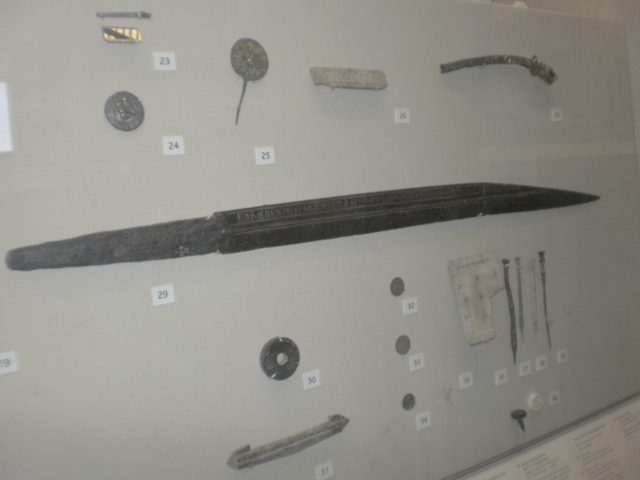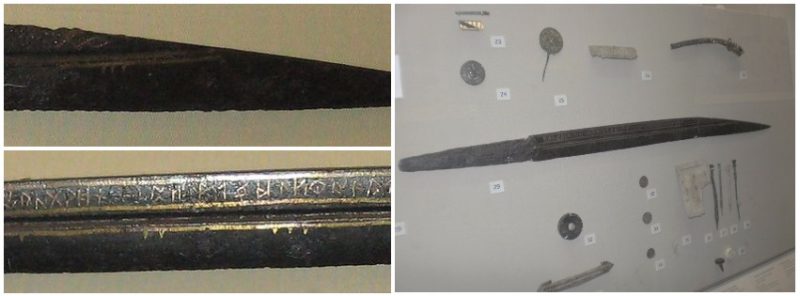The Seax of Beagnoth (also known as the Thames scramasax) is a 10th-century Anglo-Saxon seax (single-edged knife). It was found in the River Thames in 1857, and is now at the British Museum in London.
It is a prestigious weapon, decorated with elaborate patterns of inlaid copper, bronze and silver wire. On one side of the blade is the only known complete inscription of the twenty-eight letter Anglo-Saxon runic alphabet, as well as the name “Beagnoth” in runic letters.
It is thought that the runic alphabet had a magical function, and that the name Beagnoth is that of either the owner of the weapon or the smith who forged it. A
lthough many Anglo-Saxon and Viking swords and knives have inscriptions in the Latin alphabet on their blades, or have runic inscriptions on the hilt or scabbard, the Seax of Beagnoth is one of only a handful of finds with a runic inscription on its blade.
![A broken-back seax from Sittingbourne in Kent, inscribed in Insular majuscules ☩ BIORHTELM ME ÞORTE (Biorhtelm made me) and ☩ S[I]GEBEREHT ME AH (S[i]gebereht owns me). Source](https://www.thevintagenews.com/wp-content/uploads/sites/65/2016/07/A-broken-back-seax-from-Sittingbourne-in-Kent-inscribed-in-Insular-majuscules-%E2%98%A9-BIORHTELM-ME-%C3%9EORTE-Biorhtelm-made-me-and-%E2%98%A9-SIGEBEREHT-ME-AH-Sigebereht-owns-me.-640x110.jpg)
It was described as “resembling the Scramasax of the Franks (of which examples are very rare in England); and bears a row of runic characters inlaid in gold”. Since then the weapon has usually been called the Thames scramasax; but the term scramasax (from Old Frankish *scrâmasahs) is only attested once, in the History of the Franks by Gregory of Tours, and the meaning of the scrama- element is uncertain, so recent scholarship prefers the term long seax or long sax for this type of weapon.




On both sides of the seax is a deep median groove running the length of the blade, above which is a long rectangular panel bordered at the top and bottom with inlaid copper strips.
The panel on one side of the seax is filled with a lozenge pattern in silver and copper, which may have been meant to simulate pattern welding. Interestingly, whilst the first 19 letters of the runic alphabet inscribed on the weapon are in order, the rest are in a seemingly random order. The reason for this is still a mystery to modern historians.
